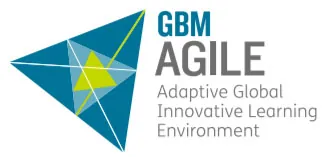Medical Coalition Led Largely by NFCR Unites to Battle Glioblastoma
 Medical knowledge of glioblastoma multiforme (GBM), the deadliest form of brain cancer, has grown exponentially, but has not resulted in marked improvements in treatment for patients. Addressing this is GBM AGILE (GBM Adaptive Global Innovative Learning Environment), a global medical and scientific coalition that is the first platform trial for GBM.
Medical knowledge of glioblastoma multiforme (GBM), the deadliest form of brain cancer, has grown exponentially, but has not resulted in marked improvements in treatment for patients. Addressing this is GBM AGILE (GBM Adaptive Global Innovative Learning Environment), a global medical and scientific coalition that is the first platform trial for GBM.
The ambitious initiative is introduced in detail in a February 2018 marker paper published by the American Association for Cancer Research journal, Clinical Cancer Research. GBM AGILE is designed to translate the growing knowledge base about the disease into effective clinical trials of candidate drug products and combinations, far better incorporating novel clinical innovations and global capabilities into complex trial protocols than is currently the case. The goal: Nothing less than new and better GBM treatments.
The National Foundation for Cancer Research (NFCR) is playing a leading role. In addition to financial and coalition building support, among the decision makers guiding the endeavor are the following, each a member of the Executive Committee to the Global Coalition for Adaptive Research (GCAR), the newly created formal management body for GBM AGILE:
- Dr. Sujuan Ba, NFCR President and a member of GCAR’s Board of Directors
- Dr. Michael Wang, NFCR Chief Strategy Officer
- Dr. Webster Cavenee, NFCR’s Scientific Advisory Board chairman and GCAR Chief Scientific Officer
- Dr. W.K. Alfred Yung, a longtime NFCR Fellow and GCAR Chief International Development Officer
“I know I speak for all of the patient advocacy groups when I say that the commitment we have seen from the international GBM research communities to unite different disciplines and break down barriers for the benefit of GBM patients is inspiring to all of us,” said Dr. Ba.
“We have to do something more—something different—something that brings the best science and innovative clinical trials together to identify therapies that work,” adds Dr. Mitchell Berger, a GBM AGILE co-investigator and Chief of Neurosurgery at the University of California at San Francisco. “GBM AGILE is the best path to achieve those goals than I have seen for decades.”
With roots tracing to 2015, GBM AGILE is a two-stage, multi-arm, platform trial comprised of figures with glioblastoma multiforme basic and clinical research expertise identifying the most promising therapies and biomarkers for the dreaded disease. Coalition doctors will then use obtained knowledge to inform the design of a new-generation adaptive trial that reconfigures as new patients enter—“learning” which candidate drugs and cocktails thereof present the greatest likelihood of success.
By including patients with both newly diagnosed and recurrent tumors and accounting for their presentation in a statistical model, the trial design will facilitate integration of knowledge that might have otherwise been disparate. Importantly, although GBM AGILE is designed to identify effective therapies and develop biomarkers for GBM, the overall process and philosophy could also be adapted for other rare cancers and diseases. When the GBM AGILE initiative began taking form, there were no virtually no biomarkers that could be employed to drive drug development and guide treatment. As a result, GBM patients have not benefited from the advances known as precision medicine.
An experimental arm (a model of treatment that includes the patient) that performs sufficiently well during its initial stage will “graduate.” Graduation signals a seamless move into the arm’s confirmatory stage. Doctors expect many arms to be added and removed as GBM AGILE progresses. An arm can be added to the trial at any time after it is approved by relevant GBM AGILE committees, provided the patient accrual rate is sufficient.
The GBM AGILE trial design offers the opportunity to accelerate delivery of improved therapies to trial participants, whereas the broadly defined eligibility criteria will leverage information learned from more patients. The seamless inferential design means that highly effective treatment arms proceed rapidly through the trial, enabling faster registration, regulatory review and adoption for routine clinical care. While even unsuccessful treatments will still be mined for information concerning potential contributions.
“Thanks to the deep molecular characterization of GBM, we are beginning to get a better picture of the genes and pathways that are altered in GBM, so there is finally an opportunity to identify real biomarkers and conduct a ‘smart’ trial like GBM AGILE,” said Dr. Yung.
There were an estimated 22,810 cases of primary malignant brain tumors in United States in 2014, of which GBM is the most common type. Median survival for adults with the anaplastic astrocytoma form of GBM is about two to three years; for more aggressive gliomastomas treated with temosolamide and radiation (the standard protocol), the median survival rate is 14.6 months while the two-year survival rate is 30%. Child patients fair slightly better, with the five-year survival rate at around 25%.
References:
- Brian M. Alexander, Sujuan Ba, et al. Adaptive Global Innovative Learning Environment for Glioblastoma: GBM AGILE. (February 2018) Clinical Cancer Research. DOI: 10.1158/1078-0432.CCR-17-0764













